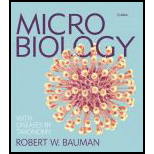
Concept explainers
Introduction:
Ploidy means the number of chromosomes. The ploidy of the cell will indicate how many set of chromosomes or genetic information the cell has. Three different types of ploidy are diploid haploid and polyploid.
Answer to Problem 1MC
Correct answer:
Haploid nuclei contain one set of chromosomes. Therefore, option (a) is correct.
Option (a) is given as “contain one set of chromosomes”.
Explanation of Solution
Justify reasons for the correct statement:
When a cell has a single set of chromosomes in its nuclei, it is known as a haploid cell. The haploid gamete will be produced by a living organism, which combines to form a zygote that is diploid in nature.
Hence, option (a) is correct.
Justify reasons for the incorrect statements:
Option (b) is given as “contain two sets of chromosomes”.
Diploid cells are those cells that have two set of chromosomes. So haploid cell will never have two sets of chromosome. Hence, it is a wrong answer.
Option (c) is given “contain half a set of chromosomes”.
Haploid nuclei will never have half set of chromosome because in haploid cell, one set of chromosome is present. Hence, it is a wrong answer.
Option (d) is given “are found in the cytosol of eukaryotic organism”.
A haploid nucleus is found in intracellular fluid, but not in cytosol of eukaryotic organism. Hence, it is a wrong answer.
Hence, options (b) (c) and (d) are incorrect.
Haploid nature of nucleus denotes that it has only one set of chromosomes. Generally gametes have one set of chromosomes.
Want to see more full solutions like this?
Chapter 12 Solutions
Microbiology with Diseases by Taxonomy (5th Edition)
- Attachment of the mitotic spindle fibers to the kinetochores is a characteristic of which stage of mitosis? a. prophase b. prometaphase c. metaphase d. anaphasearrow_forwardAt what stage in mitosis do the sister chromatids line up along the midline of the cell? a. Metaphase b. Anaphase c. Telophase d. Prophasearrow_forwardMatch the correct descriptions to mitosis and meiosis. DNA replication and 1 division DNA replication and 2 divisions somatic cells sex/gametic cells exact copies unique cells A. mitosis B. meiosisarrow_forward
- Asaparrow_forwardMatch the following events with the stages in mitosis: chromosomal materials condenses to form compact chromosomes. alignment of chromosomes along the equator or plate with microtubules attached to poles sister chromatids for each chromosome split and move to opposite poles chromosomes are clustered at each of the poles and give way to cytokinesis A. telophase B. anaphase C. metaphase D. prophasearrow_forwardMatch the stage of mitosis with the correct description. a.Microtubles that are attached to each chromosome shorten, pulling the sister chromatids apart. b.The chromosomes line up single file in the middle of the cell. Sister chromatids are clearly visible in this stage. c.The chromosomes that were pulled apart reach therir respective poles. The chromosomes decondense. The nuclear envelope re-forms. The cytoplasm with organelles divides. d.Chromosomes have replicated and appear as an "X". The nuclear envelope begins to break down. The chromosomes begin to condense into individual structures. e.Centrosomes move to the opposite ends of the cell and establish two spindle poles.The nuclear envelope is completely degraded by the end of this stage. The chromosomes are completely consensed by the end of this stage. f.Not actually part of mitosis; this stage is the part of the cell cycle that is not the mitotic phase. DNA is decondensed and appears diffuse throughout the…arrow_forward
- The individual chromosomes become visible with a light microscope during which stage of mitosis? a. prophase b. prometaphase c. metaphase d. anaphasearrow_forwardSeparation of the sister chromatids is a characteristic of which stage of mitosis? a. prometaphase b. metaphase c. anaphase d. telophasearrow_forwardA duplicated chromosome has ______ chromatids. a. one c. three b. two d. fourarrow_forward
- Match each stage with the events listed. ___ metaphase a. sister chromatids move apart ___ prophase b. chromosomes condense ___ telophase c. new nuclei form ___ interphase d. chromosomes aligned midway between spindle poles ___ anaphase e. G1, S, G2 ___ cytokinesis f. cytoplasmic divisionarrow_forwardB. Meiosis C. Could be either mitosis or meiosis QUESTION 5 What is the role of nonkinetochore microtubules? A. They move the chromosomes to either side of the cell during cell division B. They elongate the cells prior to cell division OC. They aid in DNA replication prior to cell division D. they help to create the cell plate Click Save and Submit to save and submit. Click Save All Answers to save all answers.arrow_forwardall of the following are functions of mitosis except:a. growth b. replacement of cells. c. repair of damaged tissues d. sexual reproduction ...explain your choice.arrow_forward

 Concepts of BiologyBiologyISBN:9781938168116Author:Samantha Fowler, Rebecca Roush, James WisePublisher:OpenStax College
Concepts of BiologyBiologyISBN:9781938168116Author:Samantha Fowler, Rebecca Roush, James WisePublisher:OpenStax College

